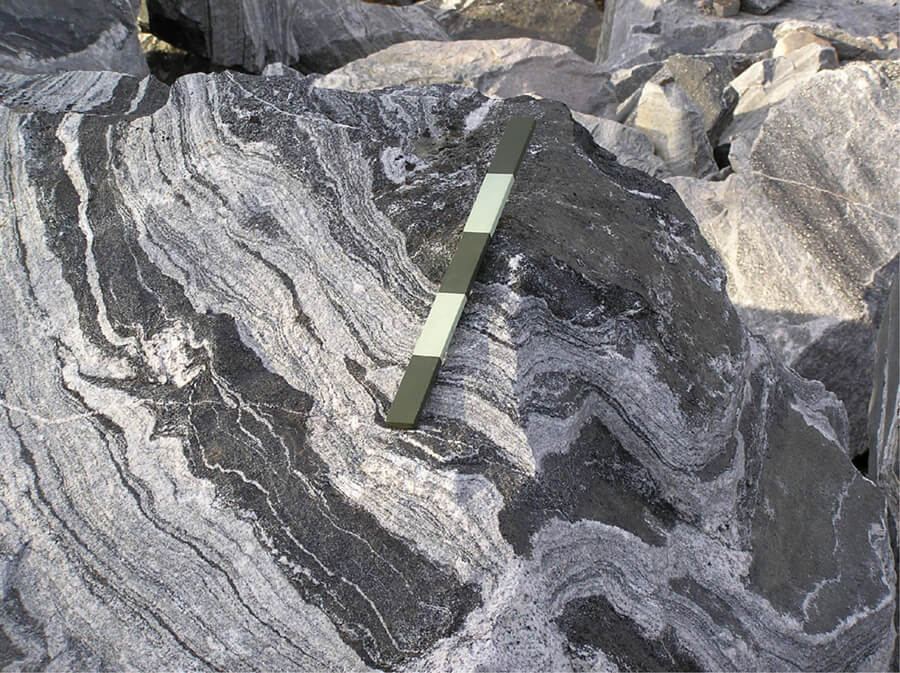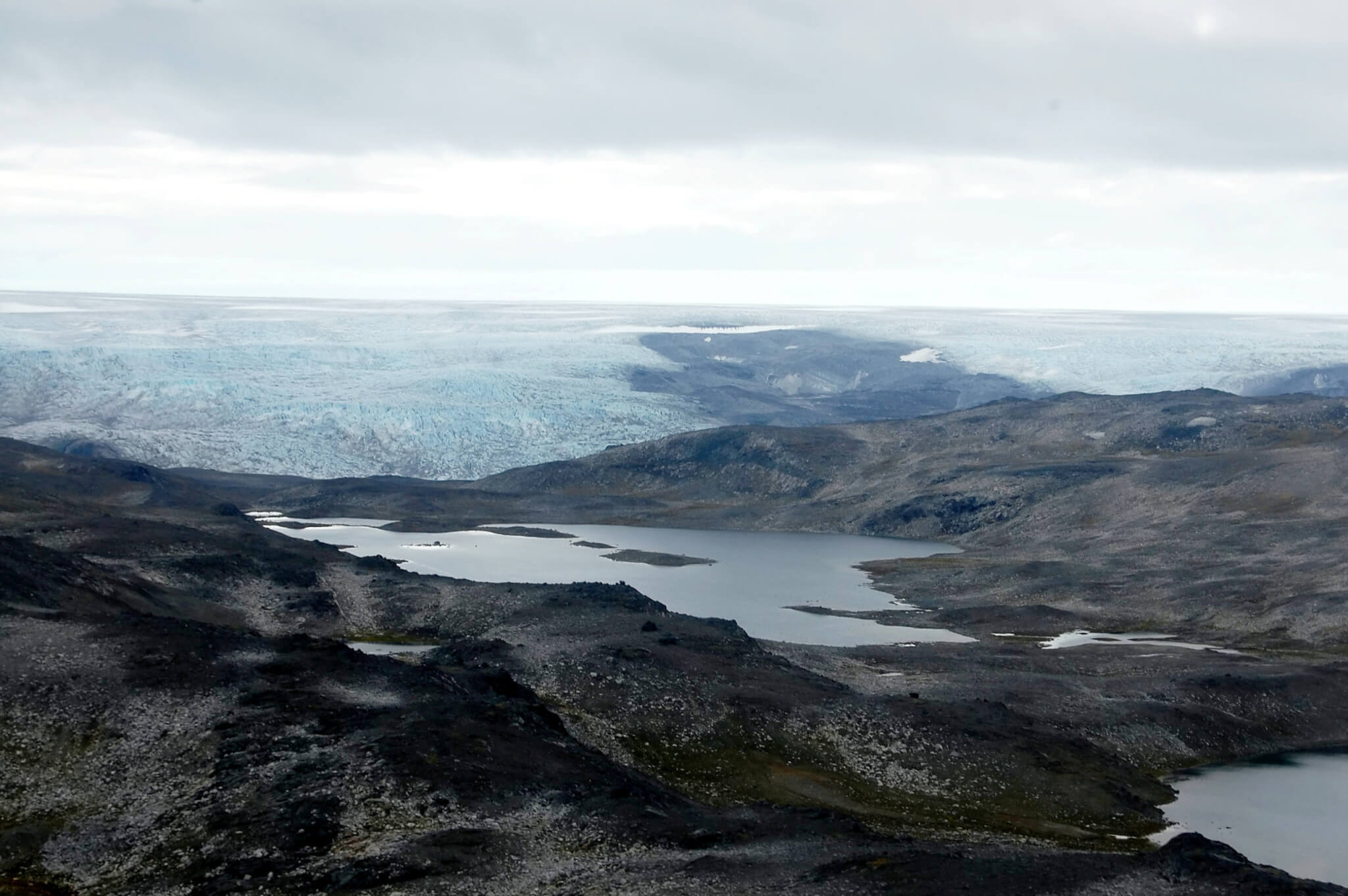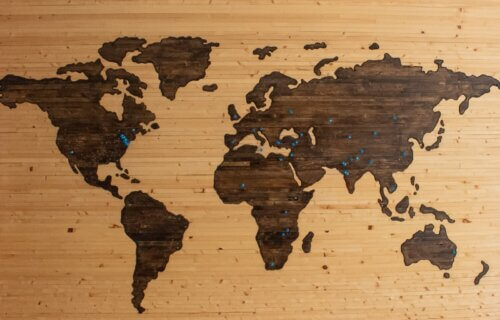VANCOUVER, British Columbia — Plate tectonics didn’t play the pivotal role in the formation of Earth’s continents as once thought. A seminal discovery from geoscientists at the University of British Columbia reveals that the continents actually developed through internal geological processes within ancient oceanic plateaus.
During the Archean Eon, which spanned from 2.5 to four billion years ago, the Earth’s early crust was primarily formed from a unique combination of granitoid rocks known as tonalite, trondhjemite, and granodiorite (TTG). These rocks have been central to understanding the early continental formation, but their origins have remained elusive due to the complex geological processes they underwent from initial melting to final crystallization.

“We tracked a specific set of trace elements that aren’t affected by alteration and pristinely preserve signatures from the original magma that made new TTG crust,” says study author Dr. Matthijs Smit, an associate professor and Canada Research Chair at the University of British Columbia’s Department of Earth, Ocean and Atmospheric Sciences, in a university release. “These elements allowed us to look back through the chemical changes that TTG magmas go through and trace the melt compositions back to their initial state and source — most likely a sort of gabbro.”
Dr. Smit also notes this specific rock is found in many homes.
“Funnily enough, many people have varieties of this type of rock as a kitchen countertop,” says Dr. Smit. “In a way, many people are preparing their dinner on the type of rock that was responsible for making our modern continents.”
The significance of Archean TTG crust extends to the present day, as it still constitutes a substantial part of continents. For example, in North America, much of the Canadian Interior is composed of these ancient crustal fragments.
“All of these rocks — and especially their combination — can be explained by the model we present,” explains Dr. Smit. “Ours is a simple model in which TTGs, as well as the younger rocks that TTGs are typically associated with, resulted from the slow burial, thickening and melting of precursor crust that likely resembled oceanic plateaus. The continental crust was destined to develop the way it did, because it kept getting buried further and the rocks at its base had no choice but to melt. In doing so, they made the TTGs that proved a winning recipe for continental survival and growth.”
This new understanding refutes the previous theory that Archean TTGs were formed in Earth’s first subduction zones, marking the start of plate tectonics.

“There’s always been a ‘chicken-and-egg’ question of which came first — the start of plate tectonics or TTG magmatism to make new continental crust,” adds Dr. Smit. “We show that these things may actually not be directly related. The recognition of the type of source rock makes this leap possible and also takes away the need to have other mechanisms, such as meteorite impact, explain the growth of the first real continents.”
The University of British Columbia study utilized data from all the TTG samples ever analyzed, gathered from Archean cratonic fragments exposed globally. This comprehensive approach allowed them to filter out local anomalies and analytical issues, focusing on the actual compositional trends in the rocks. The data, available in the open-source Geochemistry of Rocks of the Oceans and Continents geochemical data repository hosted by Georg-August-Universität, Göttingen, has provided a new perspective on the development of Earth’s continents, independent of external factors such as meteorite impacts.
The study is published in the journal Nature Communications.
You might also be interested in:

Consider this
Pangea, Warming oceans, Earth’s motions / PANGEA MAP
https://www.youtube.com/watch?v=ZgQco5FtFPM
This reminds me of the Kenyan lecturing us on global warming / climate change/ climate chaos, saying with all his self-righteous arrogance, “It’s settled science!”
Virtually every week, there’s a new discovery that puts “settled science” that we’ve known to be true for decades no longer true at all.
The reason the “scientists” keep saying what you said, and I have said what you said, is because they are basing all of their knowledge on themselves. Instead of trusting in God, and His infinite wisdom. He made the world in 6 days. It was one continent, what we used to call Pangea. Man sinned yadda yadda yadda, then man became wicked and God sent a FLOOD over the face of the earth. He warned Noa, and it took Noa 125 years to build his boat. If you don’t believe me, look it up, they found it! God opened the floodwaters (the water under the earth), and the earth’s surface changed along with it’s atmosphere. This is where your dinosaurs would not be able to survive anymore without a misty atmosphere. The continents moved while Noa floated above, and everone was washed away. All of this makes sense, otherwise we are missing billions and billions of dead human beings and animals. Where are they? There aren’t near enough for our planet’s real age, nor humanity’s.
“the Kenyan”, this is an article on science, not ignorant racists”
“Settled science” doesn’t mean that the scientists stop learning about the subject. I have more confidence, not less, because scientists continue to learn and test their theories rigorously. One rando who doesn’t understand the scientific method vs. 97% of climate scientists “settled” climate change science, even though we still are learning – most of us, anyway.
True facts have a half‐life of 80 years. Science may be the best way to truth, but overconfidence is the worst product of science.
This is old news. They were teaching this back when I was in school 45-50 years ago.
If 50 people lined up, dropped their drawers, and broke wind at the same time, it would correct the ballance of the poles, and we’d be right as rain once again. Keep thinking science and the world will be as it should.
The only reason for tectonic plates is to explain continental drift, though it doesn’t do a good job of it as they cannot get all the continents to fit together on am ancient earth with a volume similar to what it is today, so they have them drift apart and back together again. But, the continents can fit together on an earth 55% the volume it is today virtually covering the entire earth. Google Expansion tectonics by James Maxlow
The earth is a renewing environment it is meant to last forever it literally Folds in on itself, and is self renewing with individual like ourselves humans living forever on earth 🌎
I had an associate that was convinced they were called “Titanium Plates” He must have come from the school of Pots and Pangeas.
Graviy or attraction phenomena is a possible evidence of formation structures in space.p
womp womp
Poor Alfred Vegener. He’s probably rolling over in his icy grave😩
Utter nonsense. Continents were formed as they are today by the great flood. Since the earth is only approximately 6000 years old, all this nonsense of millions of years old is just false. If you guys were really intelligent, you’d know that how things were done lines up with the bible.
The explanation of the incorrect explanation of the continental drift is my theory that the planet is a simple matter of life. The Earth is a living, breathing planet. There are layers of sediment from growing and dying living organisms causing the planet to expand outward. Water from meteorites (even to this day) have added to the content of H2O over billions of years and filled in the cracks where growth is still occurring at the tectonic lines. Just as any living organism grows, expands, and enlarges, so does this Earth.
This is all new to me and I would like to watch a documentary about all of this because science-based facts often change but at least someone is trying to figure out things
Now we can ask why do all stones fit into life’s patterns? Why dose the balance point on stacked stones have a center point? Your not finding first life in stone ,Stone is first life stones are the foliage of the earth .
Seems to me the earth just eats itself and spits it back up something you’re all not talking about?.
Everyone knows that the Moon causes the ebb and flow of the tides. It influences the waters of the World Ocean, moving at a distance of approximately three hundred eighty thousand kilometers from us in an elliptical orbit. But what will happen if the Moon gets closer?
The whole truth about earthquakes
https://www.youtube.com/watch?v=s6D92WxVYxI&t=11s
https://sergeyziegler.com/blog/earthshakes-and-moon/